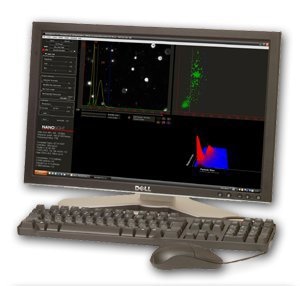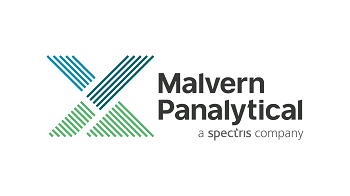The analysis of nanoparticles is a ubiquitous requirement in a broad range of industry sectors. Product performance and stability frequently depend on the ability to manufacture particle suspensions to fine tolerances without the presence of contaminants or aggregates. Foremost in such analyzes is particle size and size distribution measurement for which a number of techniques are well established and commonly employed in routine quality control as well as in a research and development environment.
About Nanoparticle Tracking Analysis (NTA)
Nanoparticle Tracking Analysis (NTA) is a unique method of visualizing and analyzing particles in liquids that relates the rate of Brownian motion to particle size. The rate of movement is related only to the viscosity of the liquid, the temperature and size of the particle and is not influenced by particle density or refractive index.

Nanoparticle Tracking Analysis Software from NanoSight
In the LM10 and LM20 instruments, the sample is injected into a viewing chamber approximately 0.3 ml in volume. The particles contained in the sample are visualized by virtue of the light they scatter when illuminated by laser light. The technique samples from a volume of 120x80x20 microns. Sample concentration is adjusted to between 107 and 109 particles/ml such that a statistically significant number of particles are present in the beam path.
Higher concentrations (e.g. 109/ml) allow for shorter analysis times as does the analysis of smaller particles (due to the increased speed of Brownian movement). Typical analysis time is approximately 30 s (900 sequential images at 30 fps) however longer analysis times improve accuracy and statistics.
The light scattered by the particles is captured using a scientific digital camera and the motion of each particle is tracked from frame to frame. This rate of particle movement is related to a sphere equivalent hydrodynamic radius as calculated through the Stokes-Einstein equation. The technique calculates particle size on a particle-by particle basis overcoming inherent weaknesses in ensemble techniques. Also, since video clips form the basis of the analysis, accurate characterization of real time events such as aggregation and dissolution is possible.
NTA currently operates for particles from 10 to 1,000 nm, depending on particle type. Analysis of 10 nm particles is only possible for particles with a high refractive index, such as gold and silver. The upper size limit is restricted by the limited Brownian motion. At 1,000 nm (1 micron), the particle moves very slowly and accuracy starts to diminish. The viscosity of the solvent also influences the movement of particles and it too plays a part in determining the upper size limit for a specific system.
Specification
- An Intel Core 2 Duo processor 1.8Ghz minimum, 3 Ghz is recommended.
- RAM. 2Gb DDR2 Ram or better required.
- Hard drive: An 80Gb 7200 rpm SATA hard drive (not 5400 rpm). The size is dependent on the expected usage of the system. Note that one run of a typical (60 second) analysis requires approximately 0.6Gb of hard disk space.
- Screen (minimum 1280x1024 resolution). Higher resolution is strongly recommended e.g. 1680x1050
- Operating System: Windows XP Professional, SP2. Windows Vista also appears to work but is not currently supported.
- 2 Free USB 2.0 ports.
- Firewire (also called IEEE1394).
- 256 Mb graphics card is recommended but not crucial.
- Conflicts due to antivirus software and networks cannot be supported and programs running in the background should be kept to a minimum.
- The PC should not be used in conjunction with other cameras.
- The PC should not be used with any other Firewire devices.
Application
NTA 2.0 is proven with most nanoparticle classes down to 10 nm (dependent upon particle type) dispersed in a wide range of solvents:
- Ceramic and metallic nanoparticles
- Pharmaceutical particles - liposomes
- Viruses
- Carbon nanotubes (multi-walled)
- Colloidal suspensions and polymer particles
- Cosmetics and foodstuffs
- Particles in fuels and oils (soot, catalyst, wax etc.)
- Wear debris in lubricants
- Chemical Mechanical Polishing Slurries
- Nanotoxicology studies
NTA Software
The NTA Analytical Software suite offers:
- Real-Time dynamic nanoparticle visualization
- Particle-by-particle analysis
- Particle counting and sizing
- Particle size distributions displayed as histograms
- Data output to spreadsheet
- Video clip capture

This information has been sourced, reviewed and adapted from materials provided by Malvern Panalytical.
For more information please visit Malvern Panalytical.